Exploring the Life and Eccentric Nature
Of North Indiaís Mysterious Mystic
Written by Sudarshan Ramabadran • Art by Baani Sekhon
Each Indian state, city, district, town and village has its unique stories and cultures to share with the people of the world. These stories never become obsolete, because they help in creating common ground, driving social change, illustrating complex concepts, providing inspiration and sometimes even leading to the way to enlightenment. My sense is that it’s time to broaden out from talking about “incredible India” to learning about “incredible Indians” who have contributed immensely to humanity with their phenomenal visions, focusing on every individual’s inner journey and growth.
The holy Himalayas have given humanity several such Indians to lead people on the path of spiritual knowledge. Some were born in India’s Himalayan region, while others found sanctuary there during arduous spiritual wanderings in search of self-unfoldment.
Miraculous, devoted, loving, inclusive, spontaneous, generous, credible, authentic, full of grace, enigmatic, selfless—how can one person be assigned so many glowing adjectives? Indeed, one Indian is described by all these words. He has become a beacon of hope and progress for seekers across the globe. His transformative story remains fascinating and thought-provoking decades after his great departure.
India’s Neem Karoli Baba (1900–1973), known simply as Maharajji, was an enigmatic being who inculcated noble thoughts in all. He embodied Indian spirituality which advocates, “Love everyone, serve everyone.” This remains one of his central lessons that resonates with millions globally.
Maharajji shunned publicity, yet he influenced millions of people through thought, word and deed. He inspired people to “love, serve and grow,” motivating people to work for causes like smallpox eradication and curing blindness. He awakened people’s passions in their chosen field, whether it be management, consulting, emotional intelligence, writing, contemplative science, spirituality or even math. Meeting him filled followers with love, developing an enduring bhakti for him in their search for Self-Realization. In the devotional hymn Hanuman Chalisa, the words Aur Manorath Jo Koi Lave, Soi Amit Jivan Phal Pave translate to, “O Hanuman, you grant the wishes of those who come to you and give them the eternal nectar, the highest fruit of life.” People who follow Maharajji and had the good fortune to meet him remember him as the Hanuman who gave seekers the sweetest fruit of life. A noble ambassador of the Indian Himalayan lineage, Maharajji never received, he only gave. He never set foot outside of India. Yet, millions of people around the globe, many who never met him, are inspired by him even after his passing, believing that he still lives as “infinite energy.”
“Patron Saint of Silicon Valley”
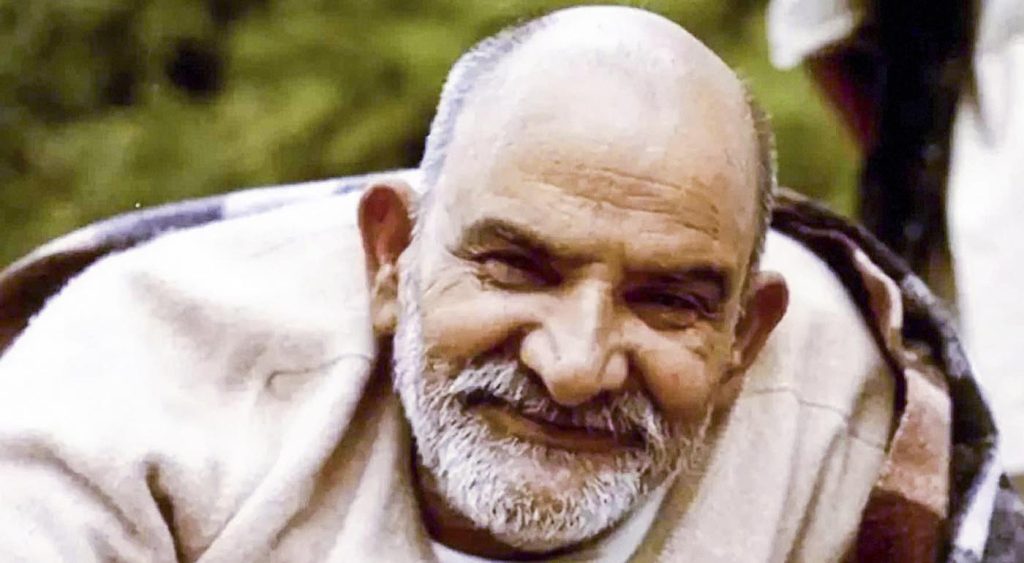
A quick search on Google or YouTube will show that many famous people, including Steve Jobs (co-founder of Apple), Julia Roberts (actor), Mark Zuckerberg (CEO of Meta/Facebook), Virat Kohli (cricketer), Anushka Sharma (actor), and many more, have placed their faith in him, even if they never met him. Several accounts state that Steve Jobs carried with him a picture of Maharajji. And it was Jobs who inspired Zuckerberg to visit Kainchi Dham in 2008. Some of his followers describe him as the patron saint of Silicon Valley. People from several corners of the world and in India remember Maharajji as a great siddha. Just as siddhas believed in passing devotion from one generation to another, Maharajji, an incredible Indian, did this for the benefit of all humanity.
Life Story
Maharajji was born as Lakshman Das Sharma around the year 1900 in Akbarpur village in the Firozabad district (then called Agra) of Uttar Pradesh, into the family of Durga Prasad Sharma. He was married early in life (at age 11 by some accounts) and had two sons, Aneg Singh Sharma and Dharma Narayan Sharma, and a daughter Girija. Lakshman Das would be seen meditating on the banks of the Ganges near Farurukhabad. Seeing him there, villagers from Akbarpur informed his father, who went there and asked him to come home. Maharajji told his father that he would come back after a few days, and he did so. Ultimately, he left his family and home to pursue his dream of becoming a sadhu.
He was called by various names: Lakshman Das, Handi Wala Baba and Tikonia Wala Baba. He was also known as Blanket Baba. In Gujarat he was known as Tallaiya Baba and in Vrindavan as Chamatkari (miracle) Baba. Today his birthdate is being observed as per the Panchang (Hindu calendar), on the shukla paksha, 8th day of Margshirsha month. This day is marked as praktaya divas (appearance day) in his birth village. In 2023, it fell on December 20.
Parvati further, author, editor and devotee of Maharajji from the US and who met with him in India, notes, “His yogic and spiritual powers were vast but, like the wind, no one could catch him; he was a wanderer who spent no more than a few days in a place, which, to the amazement of Indian devotees, changed when the Westerners arrived in India.”
In an interview with me, she said Maharajji’s presence was sufficient and they felt no need to probe into his personal life: “These details did not matter to us, nor did we ask him about them. We were home and content; that’s what mattered.”
Fame and Miracles
Drawing closer to his life, his fame and his miracles, I discovered the source of the name Neem Karoli Baba. Here is the account from Prema Vatar by P. C. Josi “Mukunda”—Kainchi Dham. “In His fancy, a young yogi carrying a chimta (a pair of musical tongs) and a ‘kamandal’ in his hand boarded a first class compartment of the Tundla-bound train at Farrukhadab station. The train had gone a few miles when an Anglo-Indian TTE (ticket examiner) came to check tickets and was taken aback to see a half-naked sadhu in the first-class compartment. On demanding the ticket and getting a negative reply, he lost his temper and ungraciously compelled the sadhu to get down at the next halt, Neebkarori.
“The sadhu quietly sat under the tree and dug the pair of tongs in the earth. The train got the green light signal to leave. The engine was started, but the train did not move further. The steam was applied with full force, but the wheels turned round and round at their place. The engine was checked thoroughly and everything was found in order.
“Being worried, the European guard came to the driver and asked him what the matter was. The driver could not point out any fault. Nothing was found. Despite all efforts, the engine would not budge. By now it was time for some other trains to pass by on that track.
“Eventually some Indian travelers suggested to those foreign authorities to request the sadhu Maharaj to board the train and then only it would move. They fretted and fumed and at last decided to try allowing the sadhu to travel by train. They went to Babaji, apologized and requested Him to board the train. The jovial Baba said “If you say so, I will oblige you.” As soon as Babaji entered the compartment, the train started moving.
“And on account of that incident, the village of Neebkarori, one of many insignificant villages of India, became famous in no time. After having stayed for a long time in this village,… he bore the name Baba Neebkarori or Baba Neemkaroli.”
My research shows that the name Neem Karoli Baba became popular because his Western followers had trouble pronouncing Karori. He was a wandering saint with no fixed itinerary or schedule. Nobody knew what he would do next. At times, it is said, he would be simultaneously present at multiple places.
Maharajji taught that it is possible to have the guru’s darshan not just in a physical form but also through a dream, vision or even via deep meditation. He said once you connect with the Divine, you are certain to have darshan of the guru. He had the power of knowing all about the people who were coming to meet him. Countless devotees have stated how these interactions with Maharajji were often life-altering and brought them into close spiritual connection with him. In their conversations, the sage was able to accurately recount to them their experiences, in their dreams or waking state. For instance, with Ram Dass, he was able to describe how the day before he met Maharajji the former Harvard professor was thinking of his mother, her death and its cause. With American devotee Parvati, Maharajji shared how she had been inspired by him even before seeing or meeting him, just by glimpsing his picture in the US.
Teachings

A man of intense spiritual discipline (tapasya), he attracted a large following who loved and respected him, including the poorest of the poor. Many houses, especially in North India, have framed photographs of him as their spiritual head. As per Namita Gokhale’s book, Swami Chidananda of the Divine Life Mission is known to have called Maharajji a “siddha purusha” (perfect being) and an “apprehender of the past, present and future.”
He attracted seekers across all age groups, races, castes, cultures, religions and geographical regions. Says Maharajji’s grandson Sandeep Bhatele (son of his daughter Girija), also known as Bobby, “He used to feed the poor always or ensure they were fed and he often solved their problems. For example, on numerous occasions people came to him for help for their daughters’ marriage. He always worked to get it organized. Maharajji cared for the common man and helped innumerable times in every way he could. He was always serving people to satisfy their needs, and unconditional love poured for all always and every time.”
Never delivering lectures and leaving no formal teachings that we know of, it makes sense that he had no monastic order. He left it to the seekers to explore and find their own way. His oft-repeated adages are to love everyone, serve everyone and remember God. These words are the crux of his teachings. He advised all to never fail to “utter the truth.” When Western followers asked about meditation, he sent them to the famed Burmese teacher of Vipasana meditation, S.N. Goenka. Bobby added, “Did he have a guru? Not much is known, but I would like to highlight that he has built Kainchi and Kakrighat at places where Sri Sombari Maharaj had his dhuni (sacred fire). My opinion is that there is some spiritual connection between the two.”
The spiritual practices he encouraged were simple, practical and easy to follow. One of them was japa, repeating the name of God. Another was chanting the 40 verses of the Hanuman Chalisa. Maharajji often repeated the two syllables, Sub ek (all are one). The centrality of this mantra is documented in various stories of his life. One story revolved around the family of Dada Mukherjee and his mother in the book, By His Grace: A Devotee’s Story. Whenever he visited Dada’s home, he would tell Dada’s mother to prepare food for all. Dada recalls how his mother did not like people from other communities entering her family’s kitchen, a typical upper-caste attitude. Yet this simple lesson of preparing food for all meant that even people from the West and other religions or castes who visited the sage had to be served a meal. Eventually Dada’s mother came to terms with this. This was Maharajji’s way of teaching Sub ek. His message was clear: if you can’t love each other, you can never achieve your goal. Hence, loving everyone is a crucial step toward Self-Realization.
According to Neem Karoli Baba, after love, service is key to spiritual progress. He taught bhakti yoga, the union of the mind through the path of devotion. His advice was to love everyone by never identifying with one’s ego. To many, yoga refers principally to physical postures. He emphasized the yoga of opening one’s heart to the power of devotion. He epitomized the famous line from the Bhagavad Gita, na me bhaktya pranasyati, which translates as “A devotee who has dedicated his inner being to me never perishes.”
Almost every instant was a learning moment. The book The Near and the Dear: Stories of Neem Karoli Baba and His Devotees, by Dada Mukherjee, recounts how Maharajji taught Dada the importance of not getting attached to the guru’s form. Dada recounts, “At Kainchi in May 1972, we had just arrived from Allahabad (today Prayagraj). After the preliminaries about our journey and the distribution of prasad, he said to me, ‘Dada, next winter I shall not come to Allahabad anymore.’ My reply was, ‘So, do not come. What is the problem in that?’ Some people were not happy with my reply, and when Babaji did not come the next winter, they started saying that I had prevented his visit. On hearing my reply, Babaji kept silent for a while and then said, ‘Dada, take leave for six months so that we can move about visiting places. I do not like to sit in one place.’ After some time, he got up and held my hand. Before moving, he said in the presence of all, ‘Do not be sad. I have been coming here regularly for the last fifteen years, and this is not good for a saint.’ The way the whole thing was done was unique and gave us an insight into his way of dealing with us, which we seldom noticed. That he would not come next winter was not given as an announcement from the higher one but was extracted from me as if with my full consent. In our haste to be close to him, we missed this subtle human aspect, a part of him that was all but unknown to us. His reference to attachment was our attachment to him, not his attachment to us. He had no attachment to anyone or anything, so there was no need to save himself. It was only to save us from our attachment to him that he stopped coming to Allahabad. He wanted us to detach ourselves from his form and the belief that his body was there for us.”
As recounted in the book Love Everyone, when Maharajji was in Delhi during the 1971 India-Pakistan war, senior army generals and Indian ministers came to see him, take his blessings and seek his counsel. Like the Bhagavad Gita in action, he imparted to the generals ways to win the war in a dharmic way and see God in it. This does not mean Maharajji favored war and violence. He taught the lesson of being peaceful in unique ways. Once a devotee from the US asked what he should do in India during wartime, to which Maharajji, in his inimitable style, responded, “Learn to be peaceful.”
Lord Hanuman and Neem Karoli Baba
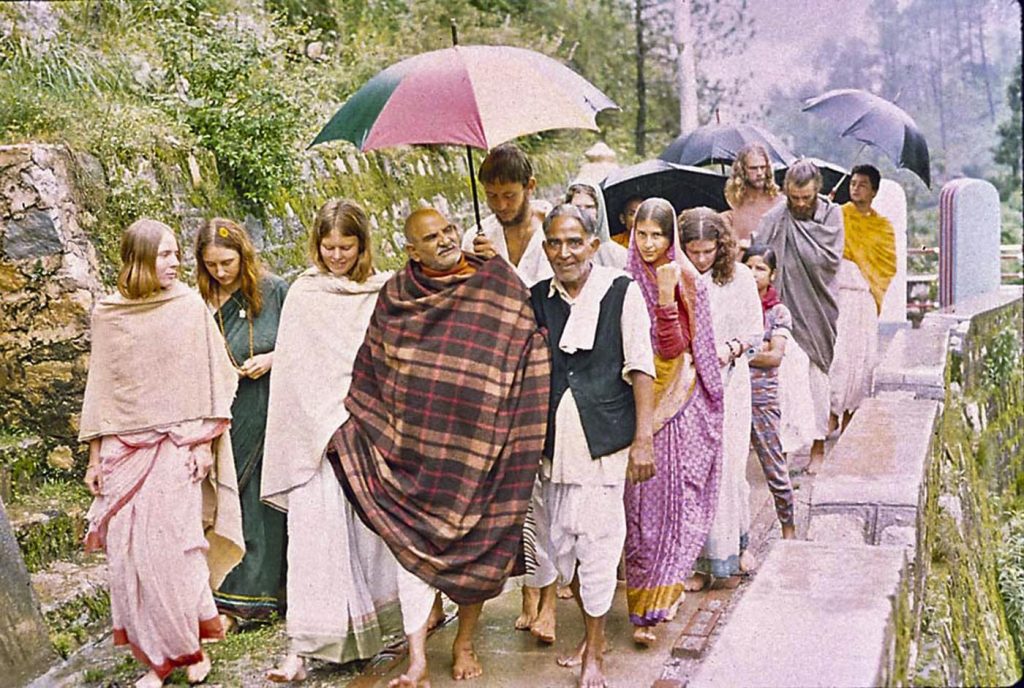
One cannot miss the ethereal connection between Lord Hanuman and Maharajji. It is a most fascinating aspect of his life. The devotees I spoke with firmly believe he was an incarnation of Hanuman. Most of the literature, documentaries and visual depictions of Maharajji include Hanuman as a key reference. The rendering of Hanuman Chalisa by Krishna Das is my favorite.
Vivek Tiwari, grandson-in-law of the sage, told me in an interview, “He is Hanumanji himself. Lord Hanuman is the most powerful energy in the entire Brahmand (creation). He is the most powerful because he doesn’t have any ego, so his entity is used by the Supreme energy for maintaining the universal system, which is automatic and self-governed. Maharajji is very similar; he is Hanuman in human form. Lord Hanuman is the emperor of the present yuga; he is a true bhakta, a sevadar, extraordinarily educated in medicine, astrology, environment, music, food, literature, in fact all panchatattva, all elements. Like Hanuman, Maharajji served all, loved all, fed all and gave jivandan to many, including humans, butterflies and other jivas, without any expectations or attachments in return.”
Parvati Markus echoed these sentiments. “Several devotees experienced Maharajji as Hanuman. Like how one flies from one place to another, devotees have experienced standing several feet away from where they were originally standing when they were held by Maharajji and transported to another place.”
Maharajji epitomized Hanuman by serving Ram and being Ram. He urged people to serve and realize God without any man-made divisions. Ram Dass’ story in the Netflix documentary Ram Dass, Going Home perhaps best puts this into context: Ram asked Hanuman, “Are you a human or a monkey?” to which Hanuman bows down and replies, “When I do not know who I am, I am serving you, and when I know who I am, I am you.” If ever one were to put Maharajji’s teaching in story form, this would be it. Hanuman embodies strength, service, devotion, power, truth, victory and compassion—and throughout Maharajji’s life these ideals are clearly discernible. Many devotees have also worshiped Maharajji as Siva, and legends say that Hanuman was an avatar or incarnation of Siva.
Bobby told me that once as a fighter jet pilot in the Indian Air Force an emergency forced him to eject from his plane. His mind flew to Maharajji and Hanuman. “I just invoked Hanuman and Maharajji and got out without a scratch.”
To his devotees, Maharajji is supreme; there is no one above him. Philip Goldberg, author of the book American Veda: From Emerson and the Beatles to Yoga and Meditation: How Indian Spirituality Changed the West, told me: “Even though Ram Dass was instrumental in bringing Neem Karoli Baba’s teachings to the West, especially the US, and taking devotees from the US to Neem Karoli Baba’s ashram, he would always want Neem Karoli Baba to be the supreme; after all, he was the inspiration and umbrella.”
From what I’ve learned, Maharajji doesn’t have a uttaradhikari, or successor. Instead, those who were inspired by him continue to serve him, his legacy and use his teachings to help people, without expecting anything in return. Devotees like Sri Siddhi Ma and Sri Jeevanti Ma emerged as pivotal figures in Maharajji’s spiritual sojourn. Nina Rao, a devotee of Maharajji and Sri Siddhi Ma based in New York said in an interview with me, “Maharajji referred to them as mothers, hence Ma. In fact, Maharajji called them Amma, which means mother, a term of endearment and reverence.”
Global Impact
Mutual cultural exchanges have become the order of the day to develop close understanding between peoples from different countries. Between 1968 and 1973, cultural exchanges enabled people of America to gain great insights into India’s strength and spirituality, its depth and expanse, all courtesy of Maharajji.
Like Ramana Maharshi, Sri Aurobindo and Ramakrishna Paramhansa, he never traveled to the US, yet left an indelible impact on that country. One of the first to be profoundly transformed by the sage was Ram Dass. Philip Goldberg ascribes this to the urge of America’s youth to find meaning and purpose. This exploration led them to India and eventually to Blanket Baba. “There was a lot of discontent in the US, and there was the backdrop of the Vietnam War and the injustices surrounding it. The youngsters felt rejected, anxious and worried about their future. Hence, the exchange that people like Ram Dass and Krishna Das had with spiritual teachers like Maharajji proved to be a turning point. It helped change lives,” explained Goldberg.
Many from the US who came seeking drug experiences began a transformative journey after meeting him. Parvati recollects, “Back in the day, I came on an acid trip to India. But when I got the opportunity to meet Maharajji, things changed. Maharajji made us realize that drugs enable you to go up and down, and he showed us a way where we were permanently happy without them. We dropped drugs after he reiterated that there was something deeper to life than drugs.”
Parvati said that when she met Ram Dass or Krishna Das in the US after their experiences in India with Maharajji, she felt they were all spiritual peas in one pod. “The connection was deep. The moment I saw them, my immediate reaction was, ‘Why do I know you?’ There was light coming from within.”
Ram Dass traveled to India to advance his academic and personal experiments with LSD. He arrived as Dr. Richard Alpert, but after meeting Maharajji realized there existed a profundity beyond psychedelics. Although he was fired by Harvard University for using LSD, students called him back for lectures upon his return. His book Be Here Now, which sold over two million copies, inspired and continues to spiritually uplift countless seekers.
Even today, devotees continue the path he set them on. “We were all sincere spiritual seekers who came to Maharajji. This notion that we were a bunch of drug addicts who came to meet him is untrue. Our meeting with him was destined for us to realize the true meaning of life, which is to love everyone. That was our inner longing. That’s what attracted us to Maharajji. We were home,” said Krishna Das, Grammy-nominated vocalist, kirtan rockstar and devotee of Maharajji. Krishna Das is famously referred to as the “chant master of American yoga” by the New York Times. His kirtans are extremely popular and well attended around the globe.
Neem Karoli Baba gave Western followers Indian names that they still maintain. Parvati Markus was earlier Barbara Markus; Mirabai Bush, an expert in contemplative science, was Linda Bush; Krishna Das was Jeff Kagel; and Ram Dass was Richard Alpert. The “das” in the names of Krishna Das and Ram Dass means “servant of God.”
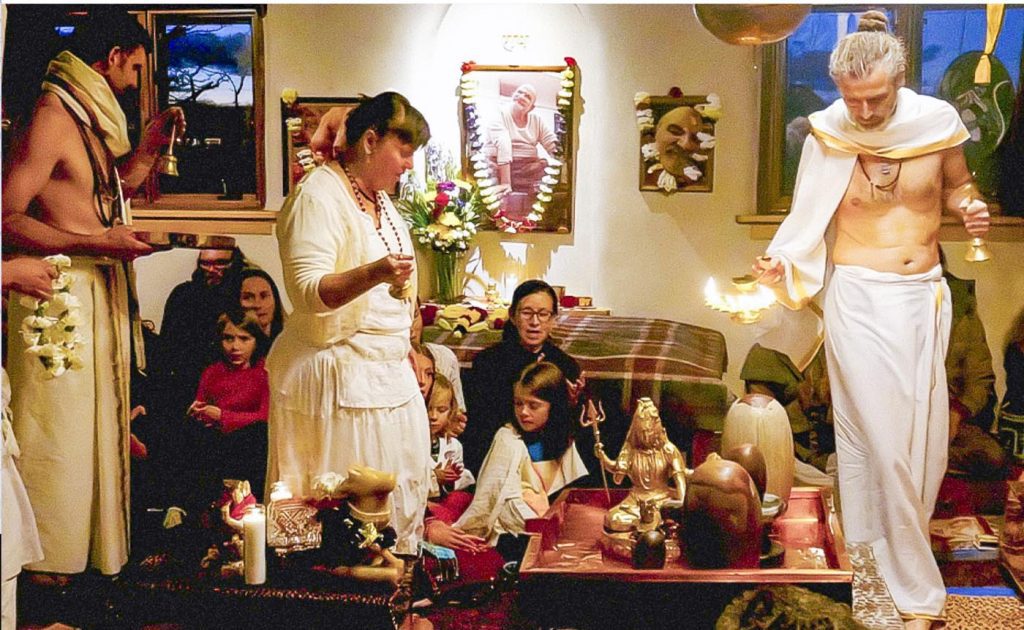
People connected with Maharajji have done truly transformational work for the benefit of society. Examples include Daniel Goleman, who has written about emotional intelligence in the New York Times and continues to work with His Holiness the Dalai Lama, and Dr. Larry Brilliant, who worked with the World Health Organization to eradicate smallpox and founded the Seva Foundation to help cure blindness.
Language was never a barrier for the sage’s devotees. “We did not feel the need to communicate with Maharajji when we were in his presence. There was also help from translators if required. We could also manage with some Hindi,” says Parvati. Reading about all this now, one feels that Maharajji is truly that universal energy. Today several institutions, ashrams and individual temples are following Maharajji’s practice of love all, feed all and serve all.
Legacy
Neem Karoli Baba attained mukti on September 11, 1973, leaving his physical body in Vrindavan on Anant Chaturdashi day. Krishna Das asserts that Maharajji is still alive and well through us and has not left us. He looks out for all of us everywhere. A samadhi shrine, constructed in his Vrindavan ashram, contains some of his personal belongings. People continue to make pilgrimages to ashrams and temples associated with him. The sage established more than fifteen temples in his lifetime, and more than 100 temples and ashrams around the world were inspired by him, all managed by his followers and family. The Kainchi Ashram in Nainital, Uttarakhand, was built in 1964. Maharajji would spend summers in Nainital and winters in Vrindavan. An annual function to commemorate the inauguration of the Kainchi Ashram is held on June 15. A small USA ashram and Hanuman temple dedicated to Maharajji is active in New Mexico.
Countless leaders, celebrities, writers and scientists have followed and continue to follow Neem Karoli Baba. He lives in their work and through them. This is only possible because of the unconditional love and the seva bhava that he imbued in all who came into contact with him. This has been successfully transmitted for years by people in various walks of life. The number of people who follow Maharajji grows every day. They go on pilgrimages to places connected to Maharajji and make sure to meditate while they are there.
He is an integral part of the rich legion of India’s spiritual might. One line of Hanuman Chalisa says, Tumhare bhajan Ram ko pavai. Janam janam ke dukh bisaravai, which means, “O Hanuman, through devotion to Ram, one comes to you and is free of sorrow for several lives.” Maharajji, through his simple but effective methods of teaching, communicated this. Maharajji uniquely demonstrated, by his own idiosyncracies, that you don’t have to be pure or holy to love God, the world and yourself unconditionally.
All his life, Neem Karoli Baba remained accessible and authentic. He was the same to the poorest of the poor and the wealthy businessmen. A shopkeeper in a remote Indian village will narrate his experiences with the sage as fervently as a devotee from outside of India. I asked Gayatri Wagle, an India-based devotee and Bach flower therapist who makes regular trips to Kainchi Ashram, to describe Maharajji in one word. She instantly responded, “Grace.”
Sayings from the Sage
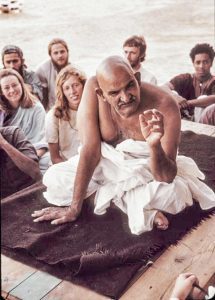
from miracle of love, by ram dass (1979)
Never hurt another’s heart.
People are quick to take a chapati, but slow to take the name of God.
Serve as Hanuman served.
The best form to worship God is every form.
Love is the strongest medicine. It is more powerful than electricity.
When asked how the heart could be purified, Maharajji said, “Always speak the truth.”
With desires, Hatha yoga does not work. Today no one really knows Hatha yoga. It can’t work through books. They used to fast and use herbs.
Worldly people go outward, but you must go inward like the tortoise, withdrawing within your shell.
You must honor Shiva through love. Ram and Shiva are the same. Ram worshiped Shiva, Shiva worshiped Ram, they are only one.
You should do your work, be friendly to everyone, and never quarrel with anyone. Do your work like a great hero and all will be well for you.
All is God’s will, but Maya prevents you from knowing it’s all God’s will. He gave us eyes, ears, nose, mouth. But He also gave us wisdom to use them to attain God.
All the money in the world is mine. Even the money in America.
What Was He Like?
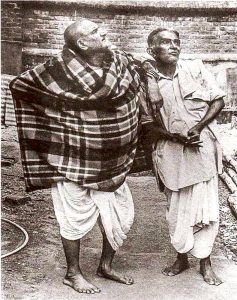
from barefoot in the heart, keshav das, 2012
Someone recently asked what it was like to be around him. As a child, all I remember is that it was great fun. As I replay those meetings in my mind, I feel differently today—here was a man who did not look like any saint that I had met—his language was often colorful; he did not have the same hangups as most other sadhus that I had come across—most have severe restrictions about where they will eat, who will cook it, etc….
His devotees did not fit into any pattern either—they were rich, they were poor; they were Hindus, Muslims, Christians, Jews, Sikhs, and even the atheists who did not realize that they had been drawn. There were the VIPs and the dacoits, all in the same room.
He preached nothing and yet his devotees were constantly learning. He met no pattern, he fit no description, and yet from where he sat he was telling the kitchen what he wanted cooked; he was telling an eight-year-old what he would be when he grew up; he was scolding someone about a recent lapse in judgment; addressing someone else about a concern that he/she was yet to express; and probably dealing with creation elsewhere in the Universe, all at the same time. The answer to every question was still “How do I know?”He defies description, and he does so on purpose.
Beyond Miracles
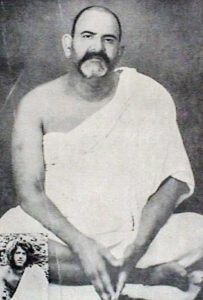
from love, serve, remember, by ram dass
Each of us knows him in our own unique way. Each thinks that the Maharajji he knows is the true Maharajji. But he is fooling all of us. And seeing his many facets reflected through each other’s stories and hearts, we come to know his play; to realize that his identities are infinite. And yet we still thirst to know him; to contain him with our minds. Oh that we could be to him as Hanuman is said to be to Rama: his very breath.
He is our way home! He is the beloved! He is wisdom incarnate! He is grace itself!
In these precious moments there is a suspension of the doubts or disbeliefs born of mind. There is no judgment, only appreciation. The tones of our voices reflect faith, reverence and wonder, delight in being privy to the cosmic joke, discomfiture at our own stupidity, and love so palpable that it is difficult to catch our breath.
There are of course his miracles: his awakening of kundalini in others with a touch, his appearing in two places at the same time, his healing the sick and bringing the dead back to life.
But those things are just the beckonings that entice us to the feast. Far dearer for us are the stories of his humanity… his sweetness… delicacy… rascality… tenderness… his childlike delight in our delight… his pain at our pain.
For me and other Westerners, these moments of sharing in faith are especially precious because it is so difficult to speak of “Guru” in the West; so hard to express unabashed devotion; so culturally unacceptable to speak of the yearning to surrender to another being.
Final Days “Let’s Go!”

From By His Grace, A Devotee’s Story, Dada Mukherjee, 2001
After 1970 I saw how very restless Babaji had become, that he just wanted to go away. He said, “Dada, I shall not have any more temples. It is very easy to build a temple, but so very difficult to run it.”
Since I had met him he had been talking constantly of building new temples and dharmashalas here and there—at Jagganath Puri, Badrinath, Chitrakut, Benares, Gaya, Allahabad. Suddenly it all changed. Now he began saying, “Dada, what is attachment for a saint? I shall run away.”
This he would repeat many times a day, but I was not to tell anyone. I knew that it was with very great effort that he was staying.
We knew that he had no attachment for the ashram or for anybody. He was there and we were with him, that was all. It was like a rented house: while we are there it is so very dear to us, but when we leave it, we do not look back. Now when he said he would go away, I thought he would just be leaving the ashram as he had left other places. I didn’t suspect that he would leave his body. After he took his samadhi, Rajuda’s mother, who was a very great devotee, accused me of knowing that Maharajji was going to take samadhi. She would not believe that I did not know.
In Kainchi one day he was in his room resting after taking his food when suddenly he came out with just a tee shirt and dhoti on, no blanket. He hurriedly caught hold of my hand, saying, “Let’s go!” We went out of the ashram and down the road. He asked, “Dada, have you been to Badrinath?” I said no. “We shall hire a taxi for six hundred rupees and go to Kedarnath and Badrinath. That is the land of the gods, rishis and the great sages. I shall remain there, but you shall return.”
About the Author
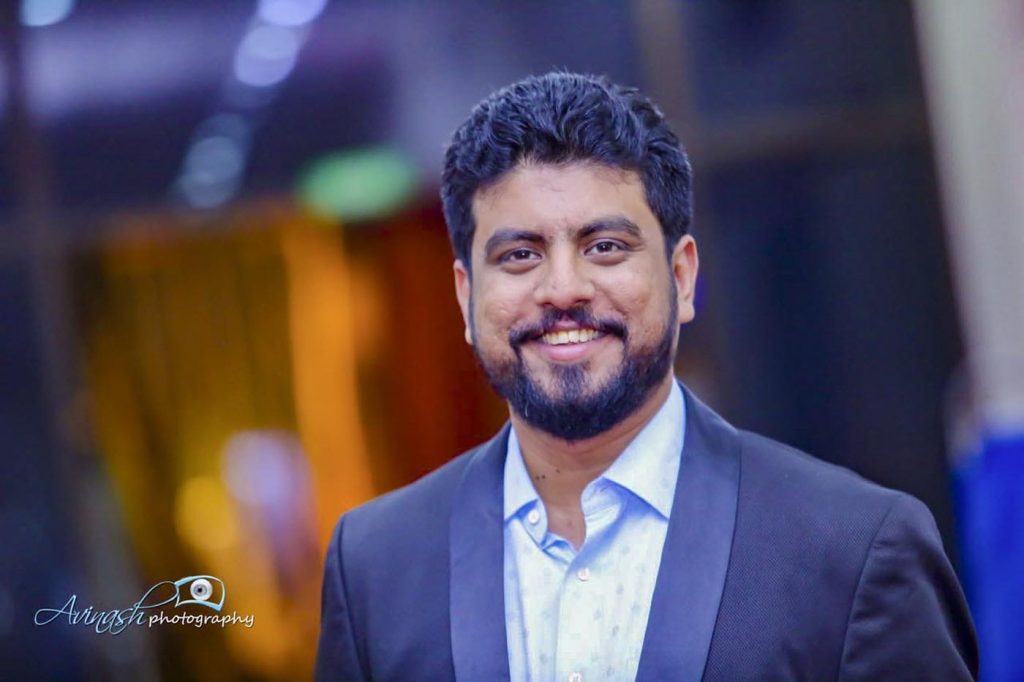
Sudarshan Ramabadran, author, policy expert and researcher, is an alumnus of the University of Southern California in Los Angeles. In 2017, he completed the Professional Fellow for Governance and Society, South and Central Asia program run by the U.S. State Department. In 2013, he authored the book Good Governance: People’s Voice published by the Government of Gujarat. In 2021, he co-authored the book Makers of Modern Dalit History, published by Penguin Random House India.

Thank you for this lucid story of a saint who inspired many.His life was a spark of devotion and love that has ignited the quest in many. Love is a mighty force that makes many things possible.